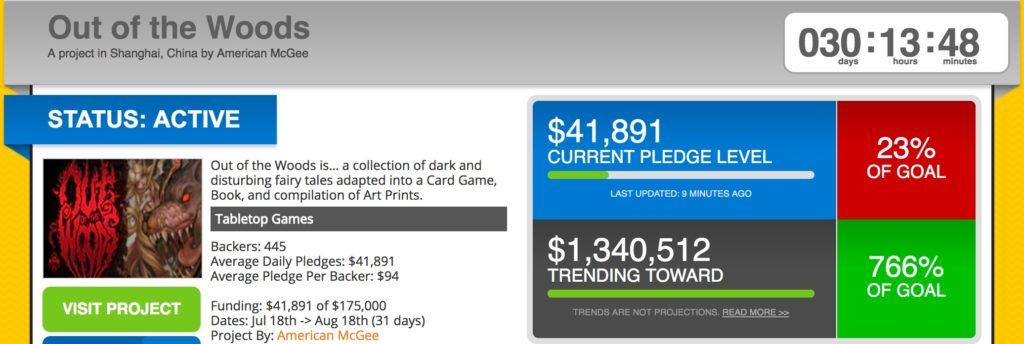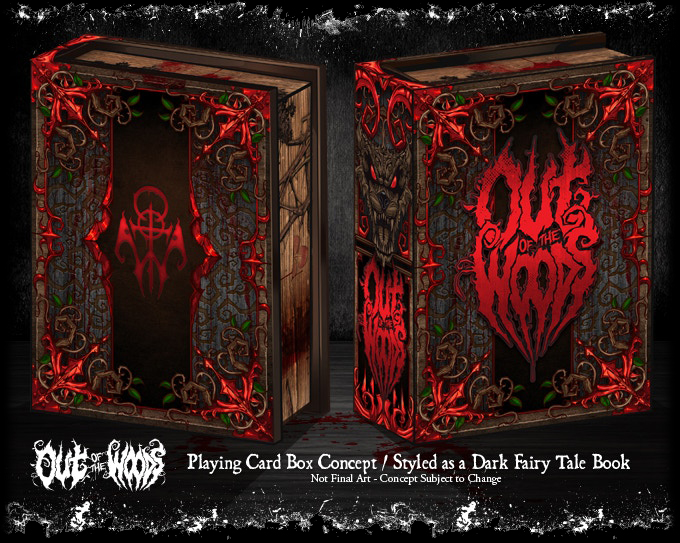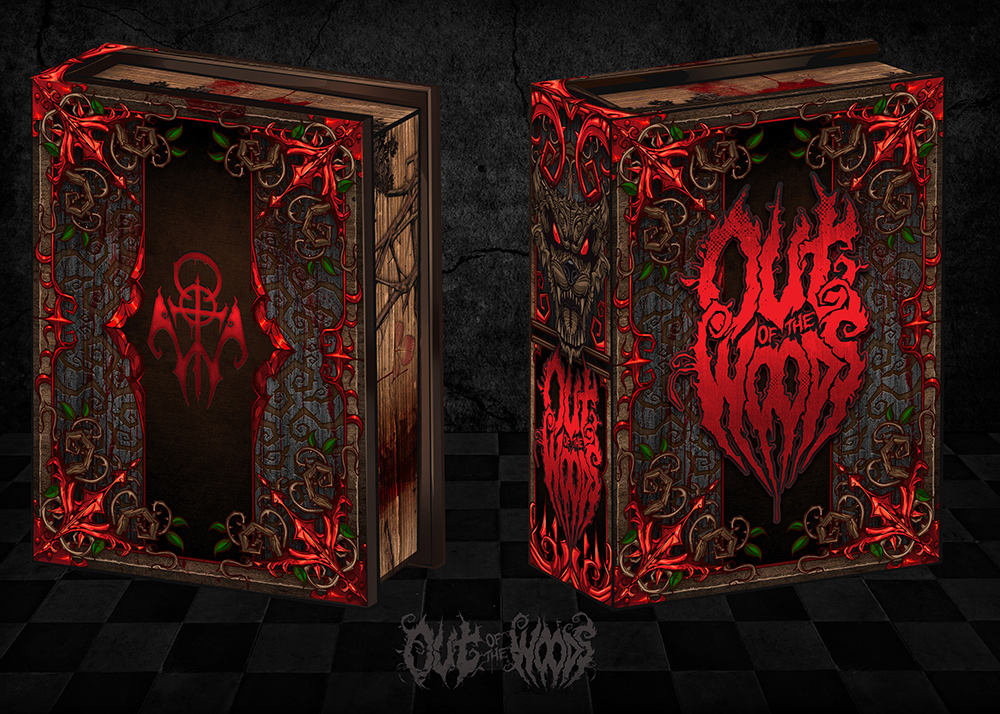This isn’t the first time I’ve told my personal story, and it probably won’t be the last, but given the events of the last year or so, I felt it was time to dust it off and share it again. I think I’ve even gained a little more perspective on the events that have shaped me and why I do what I do.
Once again, it’s time to clear the air.
The Story You (Probably) Already Know
I was born into a world of struggle, the child of rape (something no child should ever know), raised by a single mother in a low-income household. I faced a revolving door of stepfathers, some of whom brought physical, sexual, and psychological abuse into our home. As a kid, I was always “the weird one” at school and in social circles, relentlessly bullied for being different. How was I different? I didn’t know it at the time, but a mix of autism and the trauma that I’d already been through marked me as very othered.
When I was in high school, my mother married a transgender woman, and I witnessed a vicious hate attack against her that left her hospitalized for two weeks and absolutely shattered my mother, me, and my family. Watching someone I loved endure that kind of bigotry cemented my hatred of prejudice in all forms. Those experiences forged in me an indelible empathy for any marginalized group and fierce anti-bullying stance.
In my teens and early twenties, I explored romantic and sexual relationships with both men and women without shame or hesitation. I simply gave myself permission to love who I loved. Going from the relatively conservative Texas to living in San Francisco in the late 1990s gave me an opportunity to find facets of myself I never could before. From 1996 to 2000, I was immersed in the vibrant house music and LGBTQIA+ scene, spending countless nights at iconic spaces like The Stud and The End Up. So, clearly, my sexual expression during that time was, frankly, pansexual. Having been willing to embrace and experience what and who I did makes the current accusations against me not just patently false but painfully ironic.
These moments of the joy of living authentically contrasted with the abuse and marginalization I witnessed and faced myself lit a fire in me to advocate for and uplift others who’ve been sidelined or silenced.
How My Work Supports This
As I think with all artists, my creative work has been a way to both process my own pain and to give voice to others. In my video game Alice: Madness Returns, I wove in themes of childhood sexual and physical abuse, drawing directly from my own experiences of being abused by family members and family friends as a young child.
How many people – thousands or even millions of people – never get the chance or find the channel to share their story? I know I’m not the only one that went through what I did, and it’s comforting and even healing to know you’re not the only one. So, that game wasn’t just art – it was a way to speak to the trauma so many carry in silence.
With Plushie Dreadfuls, my team and I created entire product lines dedicated to mental health and LGBTQIA+ issues. These plush toys represent everything from anxiety and depression to queer identities like pansexuality, trans pride, and more. We hear from a lot of people that having a material object that represents something they normally can’t see – especially if that object is soft and comforting – is powerful self-acceptance.
Moreover, our entire team is a reflection of all of these identities, conditions, and illnesses: every member lives with physical or mental health challenges, and many are queer – pan, trans, gay, you name it. Our mission from Day One, has been to support organizations that advocate for mental health, physical conditions, LGBTQIA+, and other marginalized groups by donating directly from our sales. These aren’t just products; they’re symbols of resilience and solidarity for people who feel unseen – and their sale directly contributes to causes that make the world a better place.
Every project I’ve touched is a piece of my story, but my story isn’t unique. The abuse I endured as a child, the bullying, the hate I saw directed at my stepmother – these aren’t just memories; they’re the fuel behind my work. I know what it’s like to feel broken, to be targeted for being different, to love in ways that don’t fit into neat boxes. That’s why Alice: Madness Returns tackled trauma head-on, giving players a way to confront those dark realities through art. With that story, we faced the gritty, horrible, dark side of coping with being violated and wronged.
But, healing isn’t just facing the darkness; there has to be something good waiting for us on the other side. With Plushie Dreadfuls, that “something good” is here when you’re still in the dark. We designed each plushie to be a tangible reminder that you’re not alone, whether you’re battling mental illness or embracing your queer identity. My team and I pour our hearts into these products because we’ve lived every one of these struggles. Our mission isn’t just to sell toys or games; it’s to create safe spaces, spark conversations, and fund causes that matter. My values – empathy, defiance against hate, and a refusal to let anyone feel “less than” – are sewn into every stitch.
I am someone who’s been shaped by pain and found my resilience, and I have dedicated my life to fighting for marginalized communities in as many ways as I can. All of my creative work – from Alice: Madness Returns to Plushie Dreadfuls – has been a love letter to those who feel unseen.
The smear campaign claiming I’m anti-LGBTQIA+ isn’t just a lie: it’s a cruel distortion that weaponizes the very communities I’ve spent my life supporting. The “evidence” was cherry-picked and framed deliberately to hurt me and the people who find comfort in our products. My online history shows no trace of anti-LGBTQIA+ sentiment – because it doesn’t exist.
This attack has been deeply painful, but not necessarily for the reasons that my detractors might think.
I don’t know if anyone can ever say that they’ve recovered “all the way” from trauma, especially when experienced in childhood. Every one of us that has been shaped by abuse and/or neglect carry scars that still ache and triggers that take us back to that moment of pain, no matter how long ago it was.
I own that my trigger – the thing that makes me see red and behave irrationally and lash out – is when someone lies about me. Every child who ever tried to tell their “trusted adult” that they were being abused but were brushed off or ignored knows exactly what I’m talking about: lies aren’t just stories people make up, they’re betrayals of trust.
Moving forward, I’m committed to setting the record straight (pun intended), not just for myself but for everyone who relies on our work for representation, hope, and comfort. I’ll keep creating, donating, and advocating, louder than ever.
To those behind this smear: you don’t get to rewrite my story or silence the communities we uplift. We’re stronger than that.
The History of the Smear
The misrepresentation that I’m referring to originated on August 2, 2023, within the Plushie Dreadfuls Discord community, a space intended for fans to connect and contribute to our Crowd Design process. It began during a discussion about potential redesigns, which I explained depended on sales and stock levels. When someone asked about a redesign for our Pansexual Rabbit design, I mentioned that interest in buying pansexuality-themed rabbits had been a phase, referring to a market trend driven by TikTok that Google Trends data supported. Within the same conversation, a troublemaker called out my use of the word “phase” as offensive. I immediately clarified that I meant a phase of interest, not identity, and the exchange ended in a few minutes.
This is the context, that the whole conversation was about online marketing trends, ignored, twisting my initial statement it into a claim that I was dismissing pansexuality itself.
The Discord troublemakers posted screenshots from the August 2, 2023, Discord conversation around a month later under the headline “Plushie Dreadfuls Creator Calls Pansexuality a Phase.” This click-bait-worthy headline created a falsified scenario all on its own by ignoring my immediate clarification in the same screenshots that I mentioned a TikTok interest phase specifically. Even though the screenshots were shared in a gallery, most people didn’t look beyond the first image or even the title and reacted only to the false claim.
The Reddit post amplified the disingenuous “callout” on the Discord server, and from there the narrative spread to other social media platforms, evolving into broader accusations of even more (unsubstantiated) prejudice.
Why didn’t I just come out as pansexual myself at the time as a response to the allegations?
There are a few reasons. The first is that I never “advertised” my sexuality prior to this point, so “suddenly” claiming that I’m pan, too, would’ve seemed feigned or shifty. I’ve never denied it or tried to hide it, but it hasn’t been a topic of conversation in a long time for me. Every person deserves the dignity of sharing their personal lives on their own terms.
The second is that my life is very different now from what it was in the late 1990s. I’m married in a heterosexual relationship and have two children, and while that doesn’t negate or erase my personal identity as a pansexual, it would have invited additional scrutiny and harassment that my family doesn’t deserve. After all, if people have been cruel enough to spread hurtful lies about me and about my community and company, there would be no guarantee for the safety or security of my loved ones.
Back to the posts: I honestly never thought that a conversation of just a few minutes – one that I thought was resolved – would be weaponized like this. Referring back to owning my reactions, my response was consistently to address the accusations with facts, pointing out my clarifications, but once this group of people decided I was a horrible person, there seemed to be nothing I could say that would change their minds. Even when members of our community – people who have been supportive of the company and of our causes – came to our defense with more logic and solid evidence, it didn’t matter and the lie was perpetuated.
In my triggered state, I said some things that weren’t kind, and I own that. It showed me that I still had work I needed to do for myself, so I issued an honest and heartfelt apology and retreated as much as I could from representing Plushie Dreadfuls. My highest priority is protecting my community, and I felt that my presence was just making things worse. So, I turned all of my social media accounts to Private and hoped that staying quiet and letting my last apology speak for me would de-escalate the situation after a short time.
Unfortunately, that didn’t work.
In fact, it seems that the attacks on my name, my reputation, and my brand have continued and even been perpetuated to the point where we’ve had to take a closer look at just what’s been motivating this menacing discourse.
The Impact Thus Far
That first post that started the controversy was in the /r/plushies subReddit, a place that is intended to be a safe space for people of all ages to share their enthusiasm for stuffed animals. Additional threads in that subreddit have escalated the narrative, shifting from me calling pansexuality a phase to outright claims of my being “anti-LGBT,” and this escalation has occurred with zero moderation from the people who are supposed to oversee the /r/plushies community – people who are allegedly charged with safeguarding the information posted to their board as true and verifiable.
However, this lack of action appears to perhaps be part of a coordinated effort, with the moderators’ approval – or even being directly complicit. A recent post by the main moderator of that subreddit outright states that they wish another company would replace us in the space of creating plushies for the LGBT and mental health community. The bias is obvious and casts a great deal of suspicion on them as part of an ongoing and grueling attack on everything I’ve built and worked to protect.
The damage goes well beyond affecting me personally. The ongoing attacks have created constant stress and anxiety for our entire team, many of whom have the very same mental health issues and are part of the LGBT communities we seek to represent – communities these attackers claim to protect. Seeing LGBT individuals attacked for sharing joy in our designs, a refuge we built for them, is heartbreaking.
Personally, I’ve felt incredibly depressed and demotivated, my creative energies sapped by the relentless shaming. Professionally, the impact on Plushie Dreadfuls has been significant. The stress has undermined our team’s well-being and my confidence in my ability to lead, though we’ve seen sales resilience, which offers a glimmer of hope amidst the darkness.
In fact, it points to a pattern that suggests that this isn’t just a few people with a personal grudge.
There are frequent, obviously astroturfed posts on /r/plushies where people prompt others to rehash the slander, evolving the narrative into darker, more hateful claims, calling me an “asshole” or “terrible human.” These posts often dredge up past company missteps, stripped of context, to harm our reputation.
Recently, we’ve uncovered connections to individuals with financial interests, including those in the second-hand sales of our plushes, who buy directly from us to resell while discouraging direct purchases. Competing plushie companies, using sock puppet accounts, also fuel these “question and reply” threads, repeating our alleged transgressions endlessly to push us out of the LGBT and mental health plushie space.
A Vision for Justice and Community
We’ve tried the “turn the other cheek” strategy, avoiding direct engagement to let the drama die down, but the attacks have only grown more terrible. This approach failed because those profiting financially and posing as “haters” have controlled the narrative. The advent of AI-generated summaries have allowed the lies to infiltrate info spaces on Reddit and Google, appearing in brand searches, which is itself alarming, but what’s worse is that when we reached out to these platforms in an attempt to resolve the issues, they have proven to be totally unhelpful. The challenge is immense, as misinformation outpaces our clarifications, and the lack of moderation, especially on /r/plushies, allows the hate to fester.
Near this one-year anniversary, I’ve decided to speak out, as the constant shaming doesn’t lead to learning but instead mirrors the hate against marginalized groups. This affects not just me, my team, and our community, but everyone seeking refuge in our designs, and I feel it’s time to fight back.
The smear campaign against me and Plushie Dreadfuls has been fueled by competitors and second-hand profiteers, leaving my team and community in pain. Yet, my commitment to the LGBT and mental health causes we represent remains unshaken – and, if anything, has strengthened my resolve to fight and protect my communities even harder.
We are launching legal action, mobilizing on social media, and pursuing every avenue to end this insidious onslaught. I ask you to see the truth behind the hate and the harm it inflicts on those we serve. Join us in this fight. Share your support, challenge the misinformation, and help us build a future where creativity thrives free from malice.
Together, we can turn the tide and restore justice.
Note: After I originally posted this, I’ve had a few people write to question why I label these people “troublemakers” – which is a fair question since no context for this label is provided in the original post. As such, I’ve used one such comment/question to provide more detail into the events leading up to the Discord interaction. You can read that HERE.



